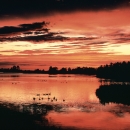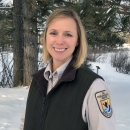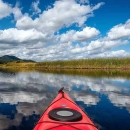States
MichiganImproving access at Seney National Wildlife Refuge
Seney National Wildlife Refuge is updating the Show Pool Shelter along M77 to address structural deficiencies and improve functionality for visitors. These actions aim to reduce future vandalism, and other inappropriate uses, and make a more usable space for visitors. These improvements will also reduce the long-term maintenance costs. Project implementation plans and timeline are currently being developed.
We are looking to complete structural improvements to a historic shelter known as the Show Pool Shelter. The general purpose of this action is to give consideration of potential adverse impacts to the historical integrity of the structure structure
Something temporarily or permanently constructed, built, or placed; and constructed of natural or manufactured parts including, but not limited to, a building, shed, cabin, porch, bridge, walkway, stair steps, sign, landing, platform, dock, rack, fence, telecommunication device, antennae, fish cleaning table, satellite dish/mount, or well head.
Learn more about structure that needs structural repairs, improve opportunities for wildlife observation, improve visitor experience, reduce unauthorized use inside the structure and consider the appropriateness of the architecture inspired from Native American culture. We have been awarded funding from the Great American Outdoors Act Great American Outdoors Act
This landmark conservation law, enacted in 2020, authorizes the use of up to $1.9 billion a year in energy development revenues for five years for needed maintenance to facilities and infrastructure in our wildlife refuges, national parks, forests, recreation areas and American Indian schools.
Learn more about Great American Outdoors Act in support of this action.
Recent and planned improvements
In addition to addressing the shelter, other improvements are underway for this location to meet Americans with Disabilities standards and make the site welcoming for everyone.
- To that end, we replaced an old outhouse with a wheelchair-accessible outhouse during the summer of 2022 and filled the old vault
- The parking area was also renovated and expanded slightly
- The driveway was truncated, ending at the parking lot and the portion that wraps around the west side of the shelter was removed to improve the view and protect natural areas by limiting automobile access
- The breach on North show pool dike was filled and the trail was reopened for this area
- An accessible parking space will be added to the site, as well as wheelchair-accessible picnic tables, grills and walkways upon completion of the shelter construction
What are the goals of this project?
We are actively working to make this recreational asset compatible with the wildlife-dependent mission of the refuge.
We’re also continuing to provide a space for you to make memories with friends and families and connect to both the natural and historical resources of the refuge.
This project will address reoccurring issues and enable the refuge to offer quality public access opportunities and facilities. Once completed, the shelter will have a different look that makes use of existing elements. The project will honor the past, present and future by remaining a location where folks can continue picnic traditions and make new ones while also having the chance to learn about the history of the Civilian Conservation Corps. New visitors may be inspired to start their own traditions or meet the National Wildlife Refuge System for the first time. Another great aspect of the project is that the revitalized facility shouldn’t need repairs for some time going into the future.
What are the tangible outcomes?
To accomplish our goal, the project will include repairing the stone fireplace grill and preserving the craftsmanship, skill and use of local materials that were originally used by the Civilian Conservation Corps. Although it will remain a non-operational element, the fireplace will be incorporated into a new log structure with a metal roof.
The log timber frame with open rafter ceiling will reflect the original log timbers of the shelter and help create the sense and feel of rustic facilities that are characteristic of the refuge. We are partnering with the State Historic Preservation Office in an agreement to develop interpretive panels that will be installed at the site, as well as complete a historic structure report.
The simplicity of the design changes, along with metal roofing, should decrease the long-term costs associated with maintaining a safe and functional facility. The open style shelter will also improve access and visibility for wildlife observation, as well as increase our ability to see inside the structure to monitor activities for administrative and law enforcement functions.
We are invested in the history of the refuge and have completed a historic district evaluation. This includes sharing the history of the Civilian Conservation Corps and Works Progress Administration at the redesigned Show Pool Shelter, the visitor center and other key points around the refuge. The shelter will include interpretative material which will be based on the historical significance of the area that was recorded during the evaluation and will be completed with the concurrence of the State Historic Preservation Office.
When will this project be finished?
Project implementation plans and timeline are currently being developed. Updates will be provided when available.
The Great American Outdoors Act is a historic investment in the protection and sustainment of our public lands and Bureau of Indian Education-funded schools. The act established the National Parks and Public Land Legacy Restoration Fund to address overdue maintenance needs and also permanently authorized funding for the Land and Water Conservation Fund - a separate fund aimed at safeguarding our natural areas and cultural heritage.
By addressing the maintenance backlog, we help ensure that visitors and staff are safe and comfortable as they access our national parks, public lands and roads, national wildlife refuges, and Bureau of Indian Education-funded schools.
Learn more about this and other Great American Outdoors Act projects.










